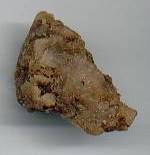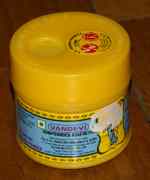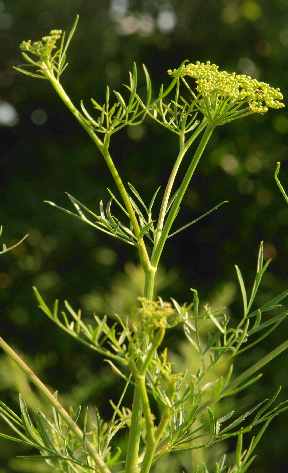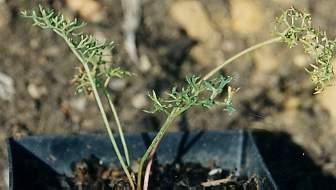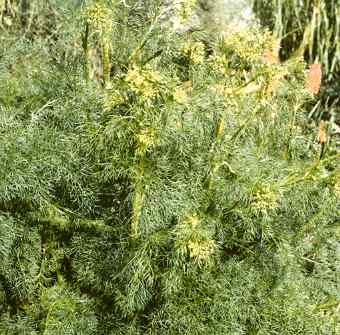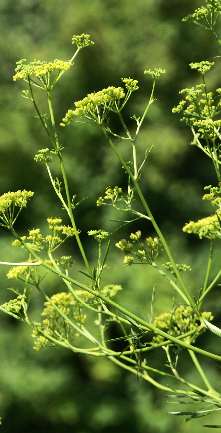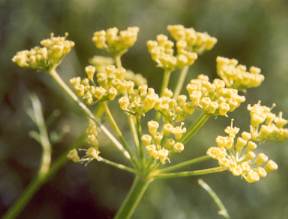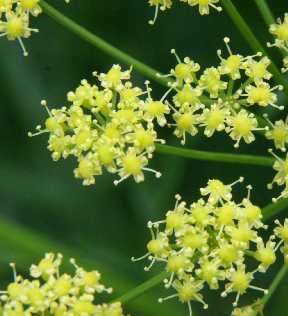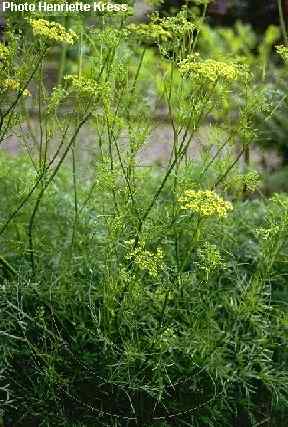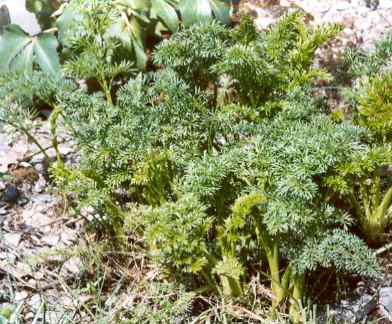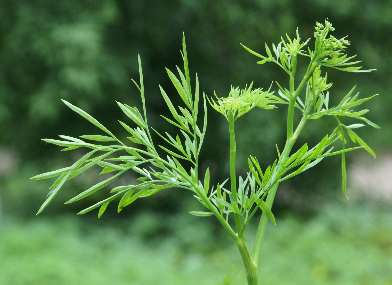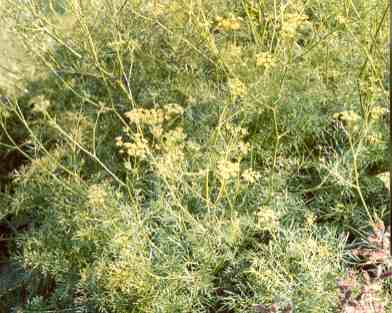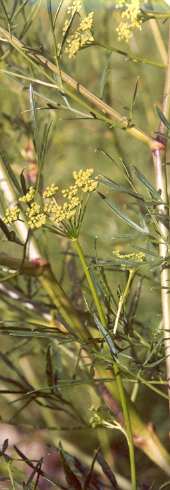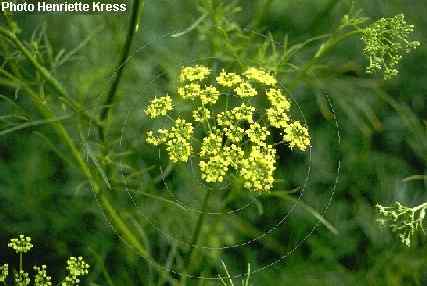
|
|
Asafetida flowers
www.ibiblio.org/herbmed |
devil’s dung; when I first heard of asafetida’s culinary use, I suspected that the person claiming that asafetida was a spice in Indian cooking was pulling my leg (I knew the smell from previous experience). Nevertheless, it’s true, and today, asafetida is one of my favourite spices.
More than two millennia ago, asafetida was already in use in Europe: Legend has
it that it was encountered by the soldiers of Alexander the Great
on their march through Central Asia. The conquests of Alexander opened
trade routes that made Eastern commodities available in the Mediterranean
region, and like black pepper, asafetida
established itself quickly on the new market. It was used in ancient Greek and
Roman cuisines, often as a substitute for the expensive North African
silphion. After the latter’s extinction,
asafetida became even more common, and continued to be used though the
early Middle Ages (for example, to flavour barbecued mutton in France). Later,
however, its popularity ceased: After the 16.th
century, it is no more mentioned in European cookbooks.
| ||
| ||
|
| ||
|
In Central Asia and India, however, asafetida has remained in important culinary spice and also herbal medicine to this day. It is sometimes used in Persian and Afghani cooking, and especially popular in India. In some parts of the country (notably, Bengal; see nigella about some peculiarities of Bengali cooking), the brahmins refuse to eat onions and garlic and often use asafetida instead. Also in the cuisines of other North Indian places, it is not common to combine asafetida with either garlic or onion, even if no taboo applies to the latter.
In the Dravidian South, asafetida is even more popular. The Tamil (South Indian) spice mixture sambar podi (see coriander) frequently contains asafetida. Although exceptions exist, asafetida has the reputation of being a spice for vegetables, not meats; now vegetarianism is more common in South India than in the North, which probably explains why asafetida is so much associated with South India, although its natural habitat lies in the North.
Asafetida is a good example for the overlapping of culinary and medicinal use of a plant. Particularly in South India, asafetida is almost canonical for the preparation of legumes (beans, peas, lentils), which are collectively known as dal [दाल] in India. Dal is a chief element of the Indian diet, as it is not only a cheap source of protein, but also one of the few protein sources open to vegetarians. Moreover, dried legumes are easy to store and have a long shelf life. However, being rich in indigestible oligosaccharids, they call for spices with prominent antiflatulence action. Asafetida, garlic and cumin are commonly used to make dal both more tasty and less cumbersome. Other countries have their own indigenous spices with similar medicinal properties, e. g., savory in Europe and epazote in México; both herbs contain strongly disinfecting components in their essential oils.
Usage of asafetida differs a little bit for the compounded (powdered) form and the pure resin. The resin is very strongly scented and must be used with care; furthermore, it is absolutely necessary to fry the resin quickly in hot oil (see also ajwain). This has two reasons: First, the resin dissolves in the hot fat and gets better dispersed in the food, and second, the high temperature changes the taste to a more pleasant impression. A pea-sized amount is considered a large amount, sufficient to flavour a large pot of food. Powdered asafetida, on the other hand, is less intense and may be added without frying, although then the aroma develops less deeply. Lastly, powdered asafetida loses its aroma after some years, but the resin seems to be imperishable (maybe, in some more ten years, I’ll substitute seems in the last sentence by is).
Daring cooks will find asafetida an interesting alternative to onion and garlic, even for
Western dishes. Careful dosage is, though, essential; in ancient Rome,
asafetida was stored in jars together with pine nuts, which were alone used to
flavour delicate dishes. Another method is dissolving asafetida in hot oil and
adding the oil drop by drop to the food. If used with sufficient moderation,
asafetida enhances mushroom and vegetable dishes, but can also be used to give
fried or barbecued meat a unique flavour.
